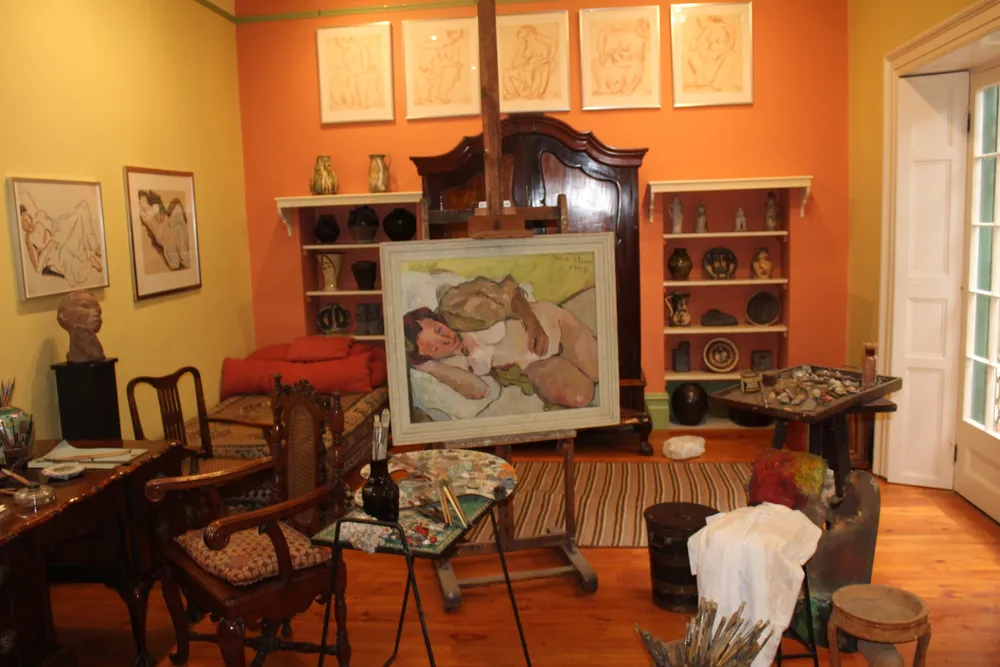Irma Stern Museum marks 50th anniversary
The Irma Stern Museum team, from left, Portia Kashe, Nobukho Nqaba, Mbulelo Peter, Lucinda Cullum and Nadja Daehnke.
The Irma Stern Museum is celebrating its 50th anniversary, and now, with relaxed pandemic restrictions, it is slowly opening up events to the public.
The museum was originally the home of the well-known South African artist who stayed there from 1925 until her death in 1966. Known as The Firs, it housed much of Stern’s work as well as her Roman, pre-Columbian American and Eastern pieces, which are displayed alongside furniture from medieval and Renaissance Europe. She also collected African wood sculptures, which would feature in her art. In 1972, the Irma Stern Trust and UCT opened the property as a museum.
In 1972, Professor Neville Dubow, the then chair of the UCT Michaelis School of Fine Art, became the first museum director, followed by Christopher Peter from 2001 to 2019. Nadja Daehnke has been the director since 2020.
From 1981, the museum started hosting exhibitions of work by other artists, and this practice still continues to this day.
In 1997, pieces from the museum were exhibited at the Kunsthalle Bielefeld, an art museum in Germany, and, in 2002, the museum’s Buli Stool, or Chief’s Stool, was exhibited in Johannesburg. It is a traditional African Art sculpture from the Luba people of Congo and was collected by Stern. The piece was made by Ngongo ya Chintu in the 19th century.
Ms Daehnke said the past two years, dominated by the pandemic, had made her job very challenging. “On the one hand, it was deeply upsetting, as I had all these ideas before hard lockdown started, though, on the other hand, it gave me an opportunity to reflect and think about what future plans of what the museum can be.”
As the museum is part of the Irma Stern Trust and UCT, it was able to avoid retrenchments. While it remained closed to visitors, it relied on its online presence to hold public interest. Ms Daehnke said worksheets and videos were made available on the website so pupils could learn about Irma Stern.
As lockdown restrictions eased, the museum was able to do renovations, but the spikes and troughs in Covid infections last year were disruptive. “It was very distressing as we never knew where we stood when it came to opening and closing: we plan events, then we have to cancel them again,” Ms Daehnke said.
But now, in its 50th year, the museum seems to be returning to some kind of normal. “It has been amazing because we had so many visitors returning again,” said Ms Daehnke.
Artist Athi Patra Ruga will exhibit from Saturday March 19 to Saturday June 18. His work will include tapestries that reference Stern paintings inspired by her 1943 and 1946 expeditions to central Africa. Georgina Gratrix will exhibit from July to September and composer Neo Muyanga will be the artist in residence from October onwards.
“These three artists look at Irma Stern’s work and reinterpret it,” said Ms Daehnke.
The museum also plans to host workshops for pupils and the general public, book launches, talks, picnics and jazz on the lawn. “The idea is because of Covid-19, we want to continue to host small events and not one big event where everyone comes.”
Museum guide Mbulelo Peter said the museum had seen many interesting visitors over the years. “Some would challenge you, while others would learn from you, and some would even teach you,” he said. “I enjoyed working at the museum, I learned a lot on a daily basis.”
Call the museum at 021 650 7240 or visit irmasternmuseum.co.za for more information and bookings. Email irmastern@uct.ac.za or WhatsApp 060 827 0787 to join the mailing list.

